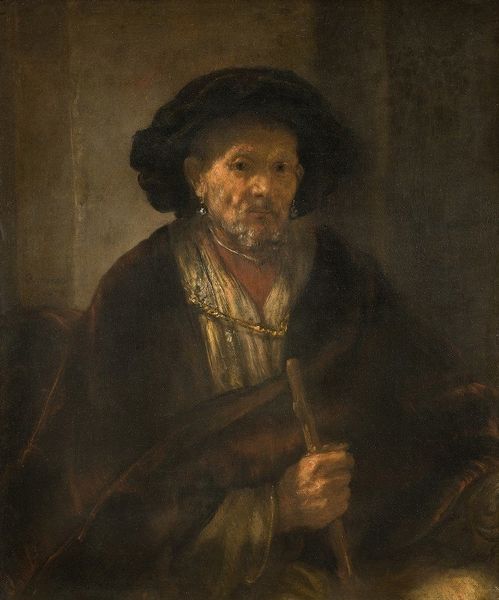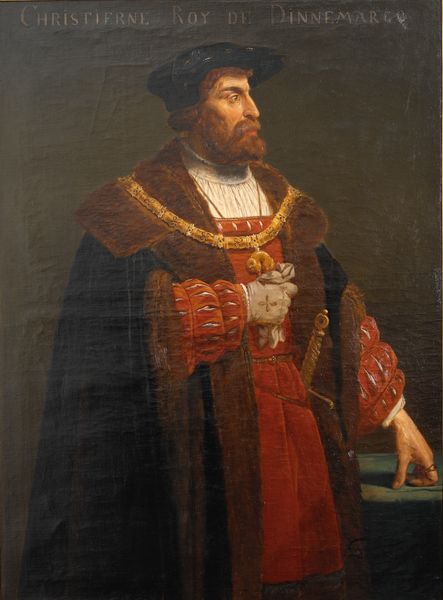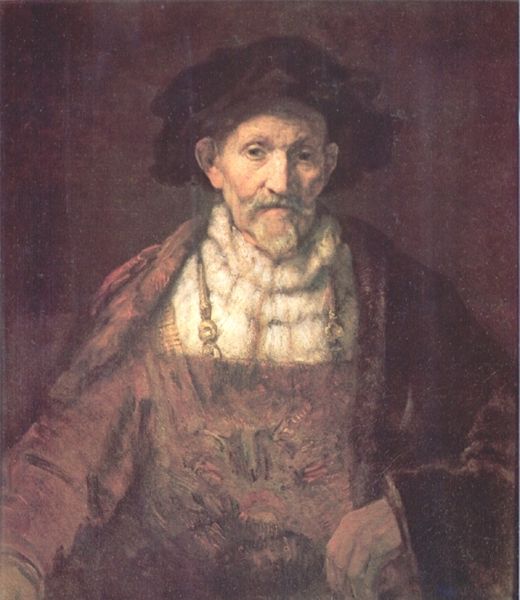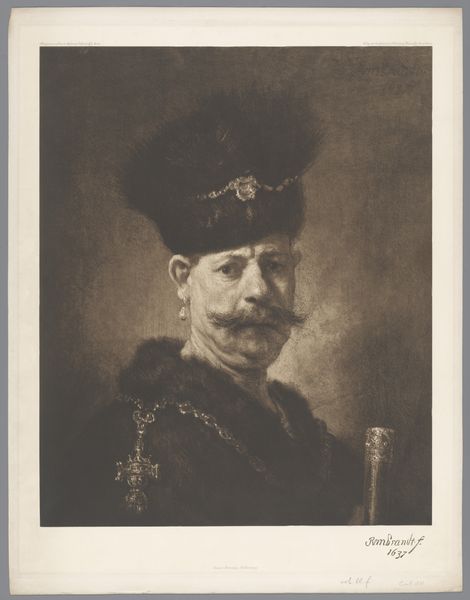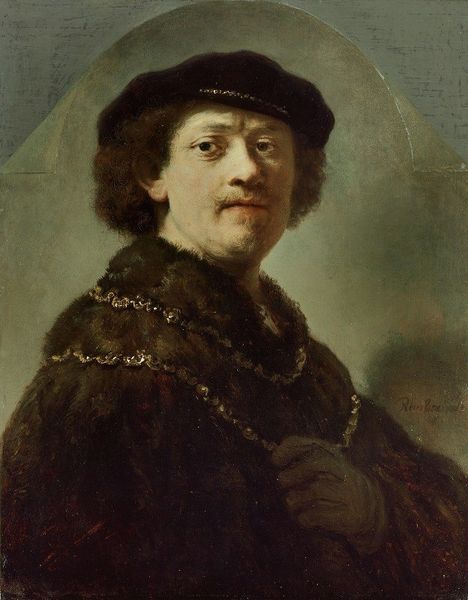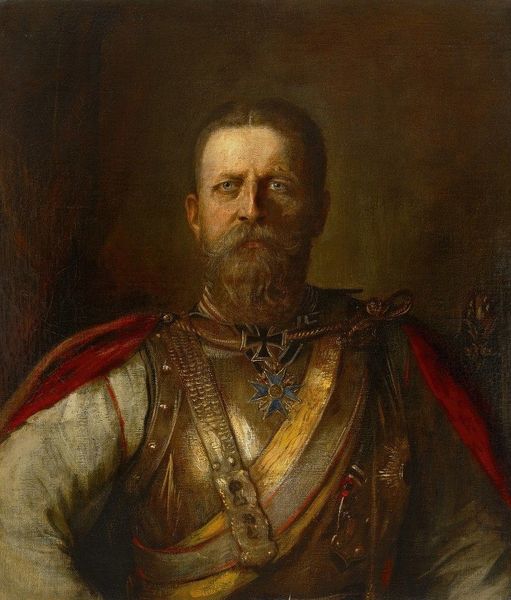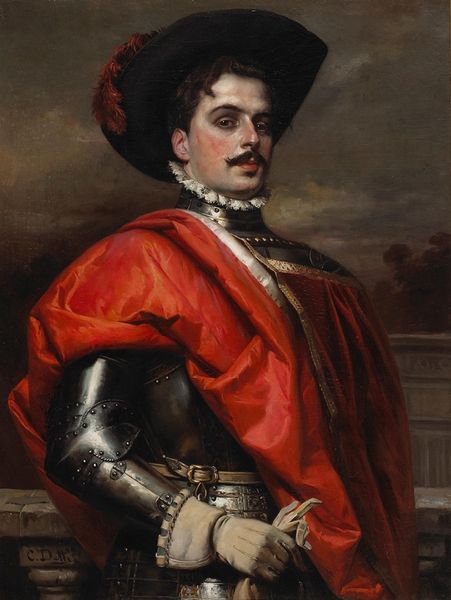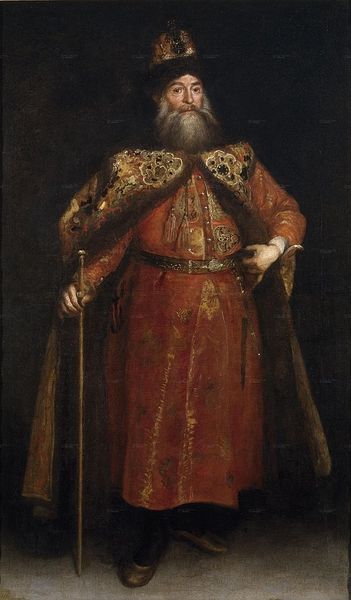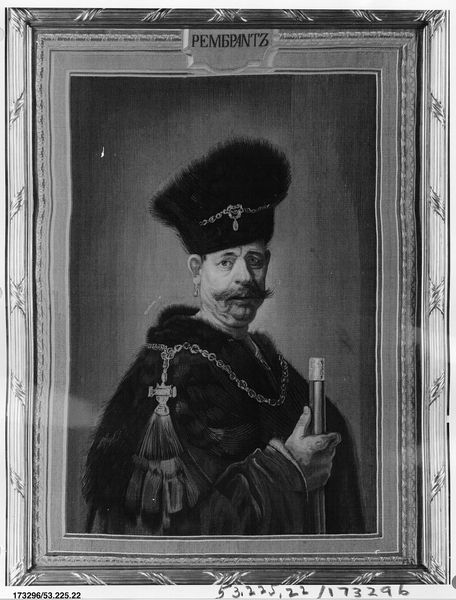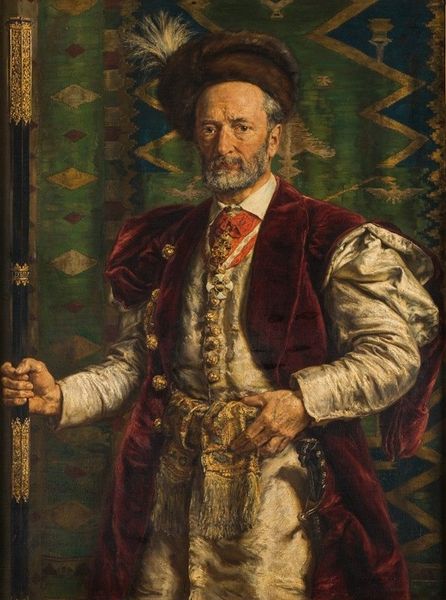
oil-paint
#
portrait
#
figurative
#
baroque
#
dutch-golden-age
#
oil-paint
#
figuration
#
oil painting
#
history-painting
#
academic-art
#
portrait art
Copyright: Public Domain: Artvee
Curator: This is Rembrandt van Rijn’s "A Polish Nobleman," painted in 1637. Editor: Well, he certainly has presence. The fur looks so heavy, and I'm immediately drawn to the cane—the hand grasping it seems almost… worn. It's the detail of the gold filigree that makes it all work, though. Curator: Indeed. It is thought this piece exemplifies Rembrandt's interest in exoticism and the performance of identity. He wasn't literally painting a Polish nobleman; rather, he was engaging with the image of Polish nobility circulating in Dutch society at the time. Editor: So it’s more of a commentary on how Dutch society viewed Polish aristocracy rather than an actual portrayal? Did Rembrandt ever travel to Poland, and if not, what sources would he have been referencing? I am thinking about what those textural translations might suggest, too; fur, after all, wasn’t just for show – its quality spoke volumes about wealth and status. Curator: Exactly! Rembrandt, as far as we know, never went to Poland. He likely drew inspiration from costume books, travelers' accounts, and possibly even Polish visitors to Amsterdam. Remember Amsterdam was a bustling hub of international trade and culture in the 17th century. This means Rembrandt probably saw actual materials and fabrics similar to those in the painting and found Polish cultural referents very "marketable." Editor: That makes me wonder about the labor involved in creating the nobleman’s garments. The gold chain and fur trimming alone probably occupied a skilled artisan for weeks! Is there anything to tell us about whether the economic power related to the nobleman depicted really mattered or just its simulacrum in Holland? Curator: The display of opulence absolutely mattered. It’s worth mentioning Rembrandt likely owned a vast collection of costumes and props, reflecting an investment in this "performative" aspect of portraiture. The studio became a stage for exploring the power of representation itself, and wealth here gets conflated and confused with political or cultural "influence." Editor: So in some sense, Rembrandt was an early practitioner of… cosplay? By creating such accurate depictions with expensive fabrics that were considered trophies, was Rembrandt playing into the capitalist and trading values of Dutch society? It sounds as though this painting's value might not have so much to do with portraiture as a process, but that there was some social messaging happening. Curator: Absolutely. By dressing his model in these exaggerated materials, Rembrandt cleverly engaged with ideas about class and otherness in Dutch culture. And, perhaps unsurprisingly, did very well in sales and securing patrons. Editor: It's a fascinating glimpse into how art can both reflect and shape perceptions. A master class on how materialism manifests within the historical canon. Curator: A lens through which to understand the intertwined nature of history, representation, and artistic creation.
Comments
No comments
Be the first to comment and join the conversation on the ultimate creative platform.

